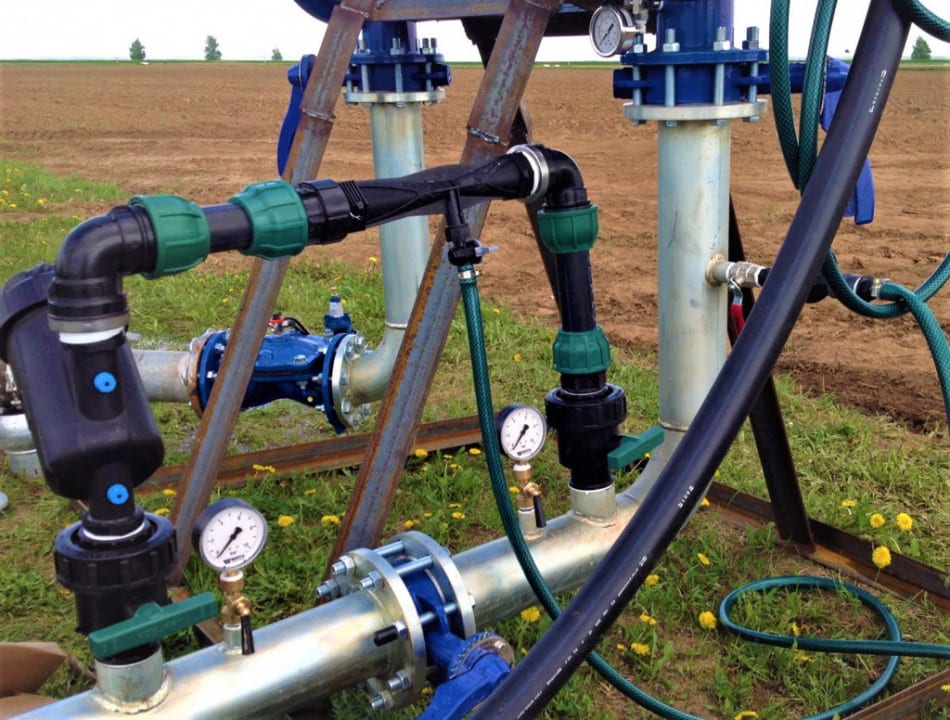WANATAH, Ind. — If you’re interested in using chemigation on your farm, it’s important to do your homework first and then follow label guidelines carefully.
“Chemigation is the process of putting a pesticide, fungicide, insecticide or even nitrogen through your irrigation system,” explained Lyndon Kelly, Purdue and Michigan State Extension irrigation specialist, at the Pinney Purdue Virtual Field Day.
“It’s important to remember that EPA requires that any pesticide put through an irrigation system have a chemigation label. That could be a separate label or sub-section of the full label.”
The chemigation label is a three-way agreement between the Environmental Protection Agency, the company that produced the pesticide and the applicator.
You must follow label instruction to ensure safe, effective use of chemicals.
Kelly shared a list of suggested minimum performance standards for chemigation. Minimum system requirements include:
• System capable of the application volume needed.
• System uniformity evaluation at 85% or higher.
• Pivot point and last sprinkler pressure within 10% of sprinkler package specifications.
• Required backflow protection in place and functional.
• No major leaks or repair needed.
• No major runoff issues.
• Interlock shut off system in place and functional.
Chemicals should not be applied when wind speed favors drift beyond the intended area, Kelly said.
Off-target applications are in violation of labels and Indiana pesticide regulations, he said.
According to Purdue Extension, accurate calibration of the irrigation system and the pesticide application rate is critical.
“The chemigation operator must be aware of the irrigation system’s speed of application (acres per hour) for the chosen water application amount and the concentration of chemical solution to determine the rate of chemical injection,” a Purdue Extension guide to chemigation states.
Learn more about chemigation and irrigation at www.canr.msu.edu/irrigation/.


